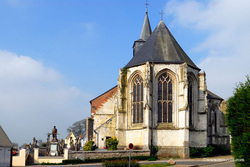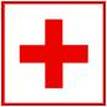|
Two men were driving along a road when a wild boar ran out in front of their car. There was a terrific bang and the poor creature was left sprawled on the tarmac. The men stopped and got out. The boar was not dead, but it had been knocked unconscious. Could anything be done for it? The men weren't sure, but they lifted it up and put it in the boot of the car and continued their journey.
Soon afterwards, they heard noises from the boot. The boar was coming round, and it wasn't happy. The next thing the men knew, the animal was forcing its way out of the boot - via the back seat. The men slammed on the brakes and fled, leaving the boar to complete its exit from the car, which it pretty much destroyed it in the process. The moral of the story: don't give lifts to boars. Let me be clear: the boar-in-car tale was set hundreds of miles from the forest where we were walking. But perhaps it was the sheer tranquillity of the spot on this late July morning that got us thinking about what wildlife may be lurking: boars, no; snails, yes. A few feet ahead of us, a pair of them - huge things - were entwined in a manner that would have done David Attenborough's Life in the Undergrowth proud. We looked down at this extraordinary sight, and then up, to the tops of the trees, a couple of hundred of feet above. In that moment, it seemed, lay the essence of the forest experience. Yet amazingly, we had popped across from England only that morning and were a mere hour out of Calais. The Pas-de-Calais is the roughly oblong-shaped département that extends south-east from the Channel and has Arras at its opposite end. People generally associate it with the drab, flat landscape you pass through on the Eurostar or on the motorways that take you south. But those heavily farmed fields are a very poor advert for a département that contains, away to the west, the magical area called Les Sept Vallées, and the forests that make for such great walking. Les Sept Vallées may not be la France profonde - everywhere is a bit too tidy and prosperous for that - but it has a feeling of remoteness delightfully at odds with its position. Hesdin, the main town here, is an attractive place with an imposing hôtel de ville that dates from 1572. For a lot of British people, it is synonymous with the Wine Society, which until 2005 was based here. The town is small enough for a forest walk to be possible from its centre. The edge of Hesdin is a stroll away, and soon the last houses are left behind as the land rises towards the forêt domaniale, with its myriad trails and glorious trees. For two and a half hours, we were in a private, silent world in which every rustle of a leaf seemed magnified. In spring, the forest floor is covered with bluebells. Locals tell you every valley has its own character, and the possibilities for exploring them are almost endless. You could spend a week in Les Sept Vallées and still walk only a fraction of the mileage on offer. The journey out of Calais will never be the same. The author travelled courtesy of Eurotunnel (08705 35 35 35; eurotunnel.com), which offers fares from £49 one way, and Pas-de-Calais tourist office (00 33 3 21 10 34 60; pas-de-calais.com). He stayed at Le Commanderie, in Les Sept Vallées (00 33 3 21 86 49 87), and also at the Hôtel du Centre, in Wimereux (00 33 3 21 32 41 08). Les Sept Vallées WHAT'S THE ATTRACTION? Luscious wooded landscape bisected by the River Canche that flows into the sea at Le Touquet. Superb network of trails, none too taxing. Walks in the forest on the edge of Hesdin have a particular appeal. The small, historic town has a good choice of restaurants to round off a morning's walking. HOW DO I FIND IT? tourisme7vallees.com. L'Escale WHAT'S THE ATTRACTION? The cuisine at most airports leaves a lot to be desired, but not this one. Situated in Le Touquet-Paris Plage International airport this gourmet restaurant is worth a detour. Dishes on the menu include local langoustine, foie gras, confit of duck and fish soup. HOW DO I FIND IT? (00 33 3 21 05 23 22; aeroport-letouquet.com). The Wine Society WHAT'S THE ATTRACTION? This handsome shop has moved to some handsome new premises at the back of the Hotel Hermitage in the town of Montreuil. You can buy a wide array of wines from the experts. HOW DO I FIND IT? Hotel Hermitage, Montreuil-sur-Mer (00 33 3 21 06 74 74; thewinesociety.com). Open Monday to Saturday 8.30am to 6pm. Closed Sundays. Côte d'Opale WHAT'S THE ATTRACTION? The stretch of coast between Calais and the River Somme can lay claim to having some of the best beaches in France with miles of unspoilt sand and endless horizons where the sea seems to melt into the sky. Try the popular Stella or Berck beaches for a stroll or a dip if you are feeling brave. HOW DO I FIND IT? Both beaches are a few kilometres south of Le Touquet. See pas-de-calais.com for details. Azincourt Medieval History Centre WHAT'S THE ATTRACTION? The Battle of Agincourt was one of the bloodiest battles of the 100 Years War, when King Henry V defeated the French on 25 October, 1415. You are able to visit the battlefield and adjacent visitors' centre, which brings the great battle magnificently back to life. HOW DO I FIND IT? 22 rue Charles VI, Azincourt (00 33 3 21 47 27 53; azincourt-medieval.com). The centre opens daily from 9am to 6pm. Admission €6.50 (£4.60) per adult. Arras Tunnels WHAT'S THE ATTRACTION? This vast network of tunnels starts from the tourist office in the town hall. The tunnels were expanded from chalk quarries during the First World War. In 1917, 25,000 soldiers used them as a secret route to the front. Today, shops, restaurants and nightclubs line some passages. HOW DO I FIND IT? Office de Tourisme Arras (00 33 3 21 51 26 95; ot-arras.fr). Hesdin market WHAT'S THE ATTRACTION? Hesdin is a charming town at the point where the Canche and Ternoise Valleys meet. Its market, held every Thursday, is the busiest in the Sept Vallées. Look out for local specialities like pavé hesdinoise, a crunchy type of chocolate, and locally cured meats. HOW DO I FIND IT? Office du Tourisme des Sept Vallées, Hôtel de Ville, Place d'Armes (00 33 3 21 86 19 19).
0 Comments
Het goede leven
Tussen de Opaalkust en Arras ligt een landschap van weilanden en beukenhaagjes, van romantische bosjes, kronkelende riviertjes en charmante dorpjes. Het is het glooiende landschap van de Sept Vallées. Hier proef je nog het goede leven van vroeger. Letterlijk, want het lijkt wel of elke boer zich hier heeft gespecialiseerd in een lokale lekkernij. Landelijk karakter Streekproducten koop je rechtstreeks bij de bron of op een van de vele markten: kaas, honing, chocolaatjes, andouillettes (dat zijn worstjes van de ingewanden van runderen of varkens, niet iedereen is daar meteen van gecharmeerd…). Voor een rustzoeker als ik is dit een geweldige streek, met een nog echt landelijk karakter. Ik kan me wel voorstellen waarom veel Nederlanders, Britten en Belgen hier een tweede huis hebben. Bloementuinen Veel particulieren in deze regio hebben hun tuin opengesteld voor publiek. Het zijn allemaal fanatieke tuiniers, die je graag vertellen over hun passie. Vaak zijn het bloementuinen. Een tuin die veel indruk op me heeft gemaakt is de Jardin de Séricourt, vlakbij Montreuil-sur Mer. Daar hing een heel romantische sfeer, echt mooi gedaan. Montreuil zelf is ook de moeite waard, met zijn oude stadswallen. Dédié à Saint Quentin, décédé au IIIeme siècle, déjà honoré sous Clovis et fêté le 31 octobre. Elle fut élevée aux XVIème siècles, après la destruction par les troupes du duc de Norfolk en 1544 de l'ancienne église situé à Emy-Fordres, avec le concours financier des seigneurs de Montcavrel. L ’église de Saint-Quentin se distingue par la qualité de son architecture et de son décor sculpté. "Élevé sur un soubassement en grès-silex, c'est un remarquable monument d'architeture flamboyante que soutiennent de beaux contre-forts à éperon ornés d'un pinacle à crochets.
L’intérieur est composé d’un chœur qui impressionne par la hauteur de ses baies à trois registres, très comme à Douriez, celles de la première travée étant murées. Quant aux bas-côtés (collatéraux) formant chapelles, celui du nord-est, consacré à la Vierge, est terminé par un chevet à trois pans occupés de hautes fenêtres refendues par un meneau ; tandis que trois autres à deux meneaux éclairent l'ensemble. Au sujet des arcs séparant le vaisseau central des deux bas-côtés, ils reposent sur des piliers de plan octogonal que couronnent des chapiteaux en forme de frises historiées qui attirent l'attention. On y observe en effet de nombreuses scènes de la vie de la Vierge de sa naissance à son Assomption- également de la vie et du martyre de saint Quentin. Puis saint Hubert au collatéral sud-est, etc." Jean Leroy - La voix du Nord Elle a cependant subi les dommages des guerres du XVIème siècle et d’importants remaniements au siècle suivant. Réduit à un chœur et un transept, l’édifice a perdu sa nef détruite avant 1715. Les piliers de la croisée sont couronnés de chapiteaux historiés relatant des épisodes de la vie de la Vierge et de saint Quentin, patron de la paroisse. L’église est inscrite à l’Inventaire supplémentaire des monuments historiques depuis 1926. La cloche Marguerite porte cette inscription : " MARGVERITE DE BOVRBON, EPOUSE DE JEHAN DE MONCHY, CHEVALIER, SEIGNEUR DE MONTCAVREL, M'A DONNE POR NOM MARGVERITE" - 1627 |
Anton & Miriam
we will share some of our adventures and discoveries via this blog Archives
January 2012
Categories |
ROOMS |
OUTSIDELOCATION |
VARIOUS |
Website made at the kitchen table in Montcavrel ........................

 RSS Feed
RSS Feed


